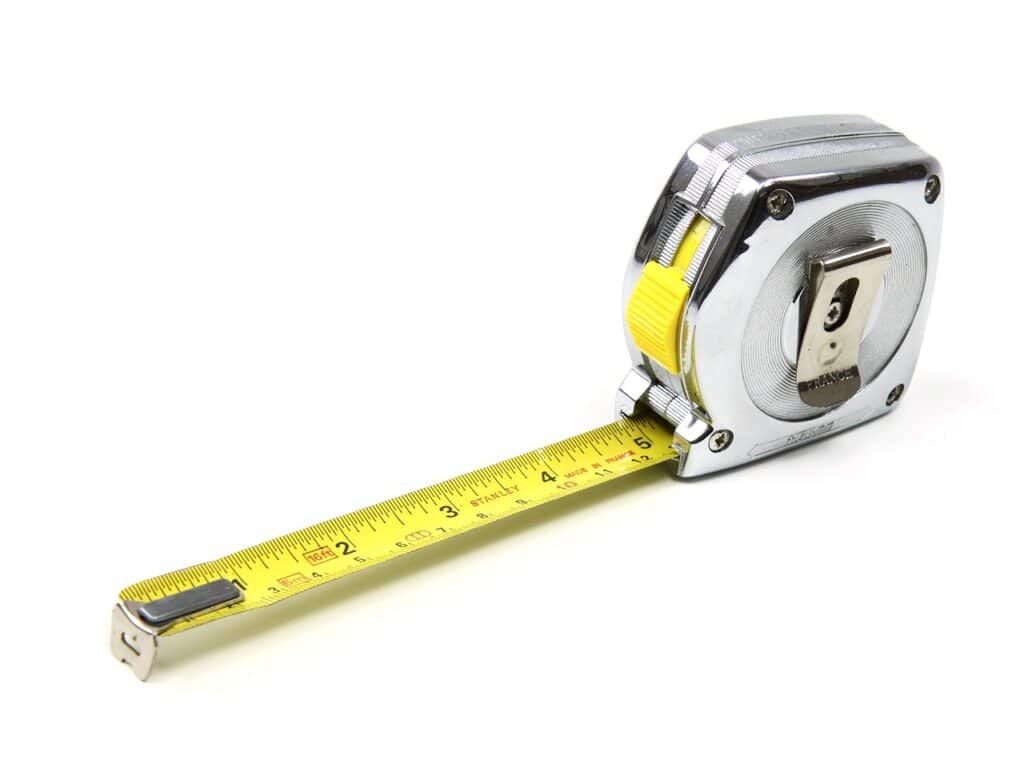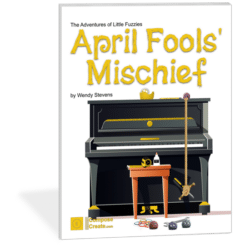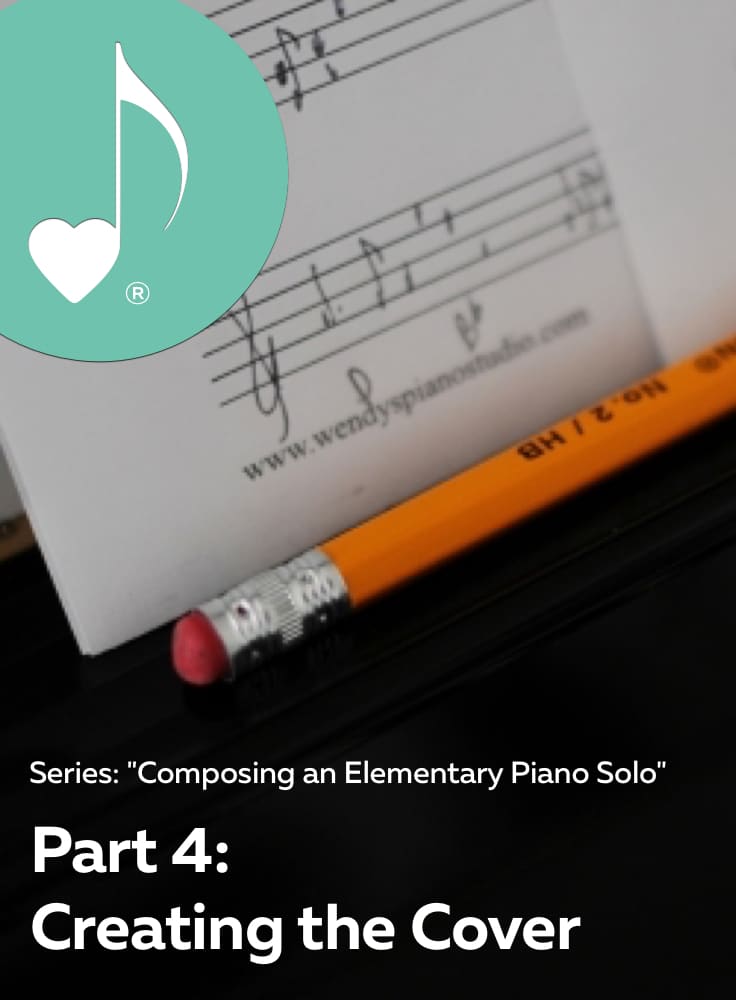
This is Part 4 of a series called The Process of Composing an Elementary Piano Solo. Here is Part 1 on writing the lyrics and Part 2 on composing the music and Part 3 on editing the music.
Besides composing the piece, creating the cover for an elementary piano solo is one of my most favorite things to do! I love taking a piece, thinking through its essence and coming up with an engaging cover.
I’ve not always been good at this. I remember in my first years of creating music, I would come up with an idea for a cover and then would show it to my husband. He had a much better eye for design at the time and he’d scrunch up his face, tilt his head, and say, “Well…maybe we can work on it together!” Those were the days when “clipart” was readily available but Canva was not, and Instagram wasn’t even a thing. So good design seemed to be only available to those with training or a natural eye. And I had neither.
Enter the Actual Artist
However, someone else in my family was an actual artist. They had experience, training, and a degree in things like painting, sculpting, and the like. And so I enlisted this person’s help in designing the covers for our earliest Listen to Me ear training curriculum (no longer available), Rhythm Menagerie®, and Rhythm Manipulations™. This artist also did a number of early covers for me including Unicorn Gliding, Pet Shop Pieces and other popular series.
I learned so much from this artist! They would take my early ideas and make them so much better than I ever dreamed. They taught me how to actually spot the “good stuff” and taught me how to be consistent in my choices within a series. I learned about color theory, gradients, and even basic things like working in layers. I’m not a graphic artist by any stretch of the imagination, but I can say that I now have an eye for the design of covers and am much better at creating the cover for pieces with existing elements in a compelling way. I never ever thought I could learn that, but I find it so encouraging to look back and see what’s possible now!
Why Did Covers Become So Important?
When I was a piano student, I remember my piano teacher showing me a piece of music that she thought I might want to play for a recital. I remember a number of pieces she showed me where I was totally turned off by the cover. It was either too babyish, boring, or too similar to everything else. I tried not to let it influence whether or not I liked the piece. But the truth was, even if I liked the piece, I tended to say “No thank you!” to the piece just because someone might see the cover and think I was playing something too childish.
So covers have always been a big deal to me.
But then Instagram happened!
Suffice it to say, everything is about the visual impression these days! And all ages of students, whether young or old are very sensitive to whether or not they connect with a cover.
So creating the cover for a piece of Music Kids Love®, Music Teens Love™, and Music Adults Love™ is as important to the piece as the music itself. Covers are a student’ “first impression” of a piece! And based on the feedback we’ve received over the years, I think we’re pretty good at it now! 😊 I often let my journey from clipart to cover designer encourage me that we can learn so many things when we’re motivated, when we pay attention, when we ask lots of questions, and when we’re willing to be taught.
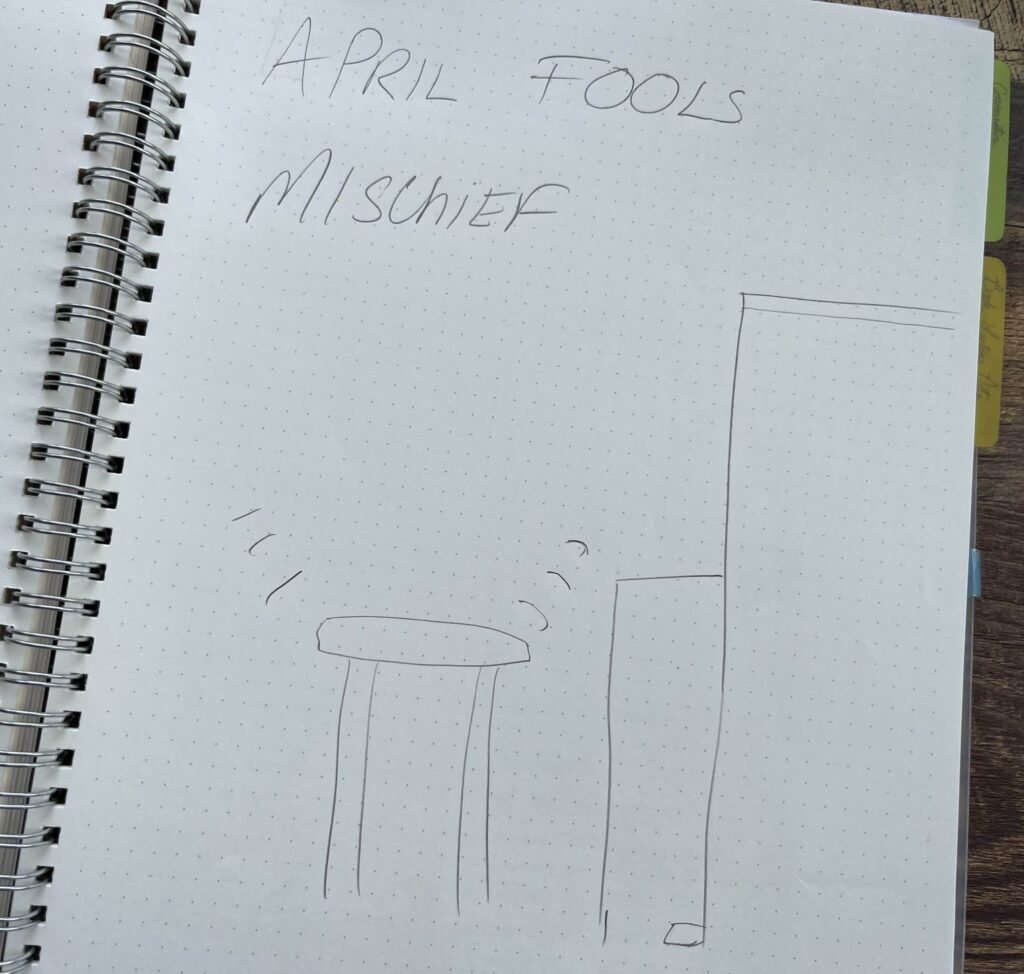
So how does this…

…become this?
What is the Process for Creating the Cover of an Elementary Piano Solo?
You can probably guess that the answer depends on the piece and whether it belongs in a series or not. We’ve been looking at the Easter Egg Hunt and April Fools’ Mischief in this series, so I’ll stick to those and tell you how those covers came to be.
April Fools’ Mischief
The fact that there are lyrics that tell a story in these pieces makes dreaming up a cover much easier. But April Fools’ Mischief was actually pretty challenging. I started by imagining that you’d see the side of an upright piano on the right part of the cover and then a big bench in the middle. I thought about putting action lines on the bench so that it looked like it was moving.
Though I knew this wasn’t a very compelling idea, I had to start somewhere so I could find the correct imagery. And so the search began.
The biggest problem with little fuzzies music is that all of the imagery has to be in a three-dimensional design. It can’t have any outlines on it, but it can have some basic shading. So for example, this image of a realistic piano does NOT work with the Little Fuzzies design:

It’s too real looking. Plus, this wasn’t the angle I was hoping for. I had trouble finding an image of a piano from the side.
So I turned to my consultants.
Now my consultants have always been people from my family. Sometimes it’s my husband, but many times, especially for Music Kids Love®, I consult my children. “What do you guys think I should do on the cover? It needs to come alive!”
My children suggested having the Little Fuzzies carrying around tools that were human size. And scotch tape. And then suddenly, my mind just went berserk! I saw the whole thing in just a few moments, “What if there was a Fuzzy at the top with a rope that was hoisting the tools up to the top of the piano?” [Imagine my face lighting up and doing a little dance because I knew I was on to something!]
Now that’s when things got dangerous! Getting a clear picture in my head of what I want is super risky. Because while I have an eye for cover design, I don’t have the skills necessary to actually draw or make the images myself. So I have to source and pay for the images and make them go together.
So when I get an idea in my head of exactly what I want, I often can’t find the images I need to put it all together. But thankfully in this case, I did find them!
Searching for images created at the correct angle was rather difficult, take for example these:

Nope: Not the same “flavor” of graphic. Too few details in this case and not realistic enough.

Nope: This is shot from the wrong angle, and again is too realistic. Not a 3D vector like creation.
In the end, I usually find vectors that work on Shutterstock and then combine them into the creation that I want them to be. Those images above are from Pixabay which is useful when I’m just looking for a small add-ons like a tape measure.
So as I was creating the cover, I added more and more “tools” for the Fuzzies. I loved the look of the yellow pencil. But the yellow on that pencil was very different than the yellow of the tape measure I found and the gold on the piano. So I compromised and made the gold on the piano more of a yellow tone and the tape measure a little brighter.
Some might say this obsession with making all the yellows on the cover similar, the “law of diminishing returns.” If that’s the case, then we have a lot of diminishing returns around here, lol. But to me, it’s just about good cover design.
Easter Egg Hunt
Easter Egg Hunt was another piece for which I consulted with my children. I knew I had to have an egg in the grass with a Little Fuzzy.
But how could I communicate that the Little Fuzzies were confused about what an Easter Egg Hunt really was?
I was very careful when creating the lyrics not to use any references to violence or weapons. So it was equally important that the covers didn’t give the idea that this “hunt” was going to be anything other than hunting something down.
So my daughter came to the rescue when she suggested a butterfly net. I loved this idea and then she also suggested binoculars. Brilliant!
But since the Little Fuzzies don’t have any arms, I was a little confused about how to integrate these items in the cover. Then, I looked over at the end table and saw a book I’ve been reading, Me, Myself, and Bob and was immediately comforted that my characters didn’t need hands! Bob the Tomato and Larry the Cucumber never had hands in VeggieTales and it was just fine!
Choosing colors for the gradient of the egg was the next issue. While I don’t think any color is “feminine” or “masculine,” I still know that because of cultural training and peer influence, kids are often influenced into thinking certain colors are “girl” colors or “boy” colors. So I’m always careful about choosing colors. I originally used pink as one of the gradient colors in the egg, but opted for a greyish purple instead.
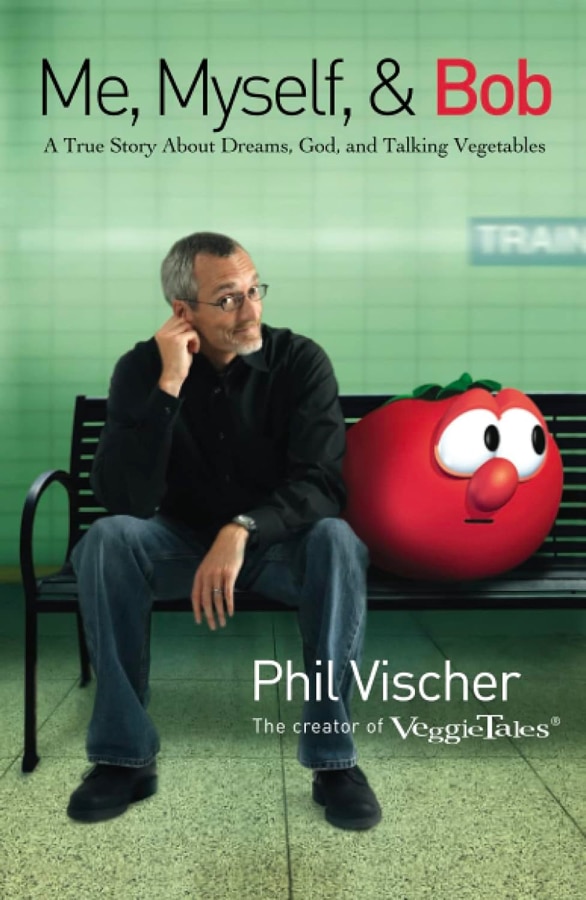
I never want there to be a reason why the cover causes a student not to like a piece!
That’s a quick look at how I go about creating the cover for an elementary piano solo – at least one that has lyrics and a story! The process of creating a cover for a non-storied piece is a little different, but what they have in common is that:
- It starts with good brainstorming.
- You have to pick an idea and just go with it, even if it’s a dead end. Because it’s in the moving through an idea that you come up with one that actually works.
- You ask others what they think and honestly note= their expressions when they see it. You’ll know by their expression when it’s the right cover.
- Tweak, tweak, tweak. You might step into the Law of Diminishing Returns space, but better to be there and give it enough attention to detail than to not give it enough attention and not “work.”
Do you have any questions about this process or these covers? Leave your questions in the comments below!
Did you enjoy reading this? Sign up for the newsletter so you don’t miss updates and articles like this one!
Here’s where you can get either of the two pieces from the Little Fuzzies Series:

